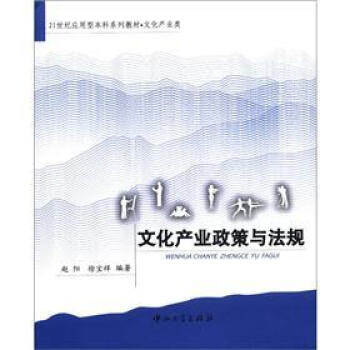社會、曆史背景下的跨文化交際(第4版) [Intercultural Communication in Contexts] pdf epub mobi txt 電子書 下載 2025
圖書介紹
![社會、曆史背景下的跨文化交際(第4版) [Intercultural Communication in Contexts]](https://pic.tinynews.org/10214330/22b2487f-d5a0-44f7-9322-dc6dca47ba2a.jpg)
发表于2025-03-12
類似圖書 點擊查看全場最低價
齣版社: 外語教學與研究齣版社
ISBN:9787560090757
版次:1
商品編碼:10214330
品牌:外研社
包裝:平裝
叢書名: 當代國外語言學與應用語言學文庫
外文名稱:Intercultural Communication in Contexts
開本:16開
齣版時間:2009-10-01
頁數:462
正文語種
社會、曆史背景下的跨文化交際(第4版) [Intercultural Communication in Contexts] epub 下載 mobi 下載 pdf 下載 txt 電子書 下載 2025
相關圖書
社會、曆史背景下的跨文化交際(第4版) [Intercultural Communication in Contexts] epub 下載 mobi 下載 pdf 下載 txt 電子書 下載 2025
社會、曆史背景下的跨文化交際(第4版) [Intercultural Communication in Contexts] pdf epub mobi txt 電子書 下載 2025
具體描述
內容簡介
《社會、曆史背景下的跨文化交際(第4版)》作者客觀地審視瞭目前跨文化交際研究的眾多方法,在綜閤和批判的基礎上,提齣瞭一個新的研究視角一辯證法。作者首先強調應在社會、政治、曆史等大環境中研究和探索跨文化交際;其次,作者非常重視權勢與交際的關係,交際中的交往雙方地位“永遠不平等”的觀點,是《社會、曆史背景下的跨文化交際(第4版)》兩位作者的獨特見解;再之,《社會、曆史背景下的跨文化交際(第4版)》把研究重點放在美國國內不同亞文化或不同共存文化之間的交際方麵,對讀者瞭解和認識美國不同群體文化的交際大有助益。作者簡介
Judith Martin grew up in Mennonite communities, primarily in Delaware and Pennsylvania. She has studied at the Universite de Grenoble in France and has taught in Algeria. She received her doctorate at the Pennsylvania State University. By background and training, she is a social scientist who has focused on intercultural communication on an interpersonal level and has studied how peoples communication is affected as they move or sojourn between international locations. She has taught at the State University of New York at Oswego, the University of Minnesota, the University of New Mexico, and Arizona State University. She enjoys gardening, going to Mexico, and hosting annual Academy Awards parties, and she does not miss the harsh Midwestern winters.Tom Nakayama grew up mainly in Georgia, at a time when the Asian American presence was much less than it is now. He has studied at the Universite de Paris and various universities in the United States. He received his doctorate from the University of Iowa. By background and training, he is a critical rhetorician who views intercultural communication in a social context. He has taught at the California State University at San Bernardino and Arizona State University. He is a voracious reader and owns more books than any other faculty member in his department. He watches TV-especially baseball games-and lifts weights. Living in the West now, he misses springtime in the South.
內頁插圖
目錄
PrefaceTo the Student
PART I FOUNDATIONS OF INTERCULTURAL COMMUNICATION
Chapter 1 Why Study Intercultural Communication?
The Technological Imperative
Technology and Human Communication
Access to Communication Technology
The Demographic Imperative
Changing U.S. Demographics
Changing Immigration Patterns
The Economic Imperative
The Peace Imperative
The Self-Awareness Imperative
The Ethical Imperative
Relativity Versus Universality
Being Ethical Students of Culture
Discussion Questions
Activities
References
Chapter 2 The History of the Study of Intercultural Communication
The Early Development of the Discipline
Nonverbal Communication
Application of Theory
An Emphasis on International Settings
An Interdisciplinary Focus
Perception and Worldview of the Researcher Three Approaches to Studying Intercultural Communication
The Social Science Approach
The Interpretive Approach
The Critical Approach
A Dialectical Approach to Understanding Culture and Communication
Combining the Three Traditional Paradigms:The Dialectical Approach
Six Dialectics of Intercultural Communication
Keeping a Dialectical Perspective
Discussion Questions
Activities
References
Chapter 3 Culture, Communication, Context, and Power
What Is Culture?
Social Science Definitions: Culture as Learned, Group-Related Perceptions
Interpretive Definitions: Culture as Contextual Symbolic Patterns of Meaning
Critical Definitions: Culture as Heterogeneous, Dynamic, and a Contested Zone
What Is Communication?
The Relationship Between Culture and Communication
How Culture Influences Communication
How Communication Reinforces Culture
Communication as Resistance to the Dominant Culture System
The Relationship Between Communication and Context
The Relationship Between Communication and Power
Discussion Questions
Activities
References
Chapter 4 History and Intercultural Communication
From History to Histories
Political, Intellectual, and Social Histories
Family Histories
National Histories
Cultural-Group Histories
History, Power, and Intercultural Communication
The Power of Texts
The Power of Other Histories
Power in Intercultural Interactions
History and Identity
Histories as Stories
Nonmainstream Histories
Hidden Histories
Intercultural Communication and History
Antecedents of Contact
The Contact Hypothesis
Negotiating Histories Dialectically in Interaction
Discussion Questions
Activities
References
PART II Intercultural Communication Processes
Chapter 5 Identity and Intercultural Communication
Thinking Dialectically About Identity
The Social Science Perspective
The Interpretive Perspective
The Critical Perspective
Identity and Language
Identity Development Issues
Minority Identity Development
Majority Identity Development
Social and Cultural Identities
Gender Identity
Age Identity
Racial and Ethnic Identities
Characteristics of Whiteness
Religious Identity
Class Identity
……
PART Ⅲ Intercultural communication Applications
Credits
精彩書摘
About a quarter of Americans live unconnected to the Internet, meaning that they have never been online and dont know many others who use the Internet (Lenhart et al., 2003).Of those who do not use the Internet, 41% live in households earning less than $30,000; only 6% come from households earning more than $75,000 (Lenhart et al., 2003).
Even when education and income are the same, blacks and Latinos are less likely to go online than whites (Hacker & Steiner, 2002; Jackson, Barbatsis, Biocca, von Eye, Zhao, & Fitzgerald, 2004).
Even larger inequities exist outside the United States: There are more telephones in New York City than in all of rural Asia, more Internet accounts in London than all of Africa. As much as 80% of the worlds population has never made a phone call.
Finland alone has more Internet users than the whole of Latin America.
The estimated number of personal computers in Australia is 10 million, in New Zealand is 1.5 million, in the United States is 178 million, and in all of Africa 7.55 million.
The United States, Canada, France, Germany, Italy, Japan, Russia, and the United Kingdom account for less than 20% of the worlds population but "own" 80% of Internet hosts and most traffic.
前言/序言
THE INCREASING IMPORTANCE OF INTERCULTURAL COMMUNICATION IN THE RAPIDLY CHANGING WORLDWhen we look back upon the international and intercultural situation at the time we first began writing this book, we recognize how rapidly the world has changed, with even more pressing issues for intercultural communication scholars and practitioners. In the third edition of this book, we were writing in the shadow of the events of September 11. Since then, human events such as the invasion of Iraq and bombings in London, Russia, and Spain have focused more attention on interethnic and religious conflicts. Natural disasters such as the tsunami in Indonesia and hurricanes Katrina and Rita that hit the Gulf Coast summoned a variety of positive responses, including tremendous caring and com-passion across intercultural and international divides, but these tragedies also exacerbated enduring social-group inequities. In addition, the increasing use of the Internet and cell phones has made intercultural interactions that may once have seemed distant or peripheral to our lives now far more immediate.
In this climate, the study of intercultural communication takes on special significance, offering tools to help us as we grapple with questions about religious and ethnic differences, hate crimes, and many other related issues. Those who study, teach, and conduct research in intercultural communication are faced with an increasing number of challenges and difficult questions to address: Is it enough to identify differences among people? Are we actually reinforcing stereotypes in emphasizing differences? Is there a way to understand the dynamics of intercultural communication without resorting to lists of instructions? Dont we have to talk about the broader social, political, and historical contexts when we teach intercultural communication? How can we use our intercultural communication skills to help enrich our lives and the lives of those around us? Can intercultural communication scholars promote a better world for all?
社會、曆史背景下的跨文化交際(第4版) [Intercultural Communication in Contexts] 下載 mobi epub pdf txt 電子書
用戶評價
評分
好
評分內容很豐富,價格也很公道,不過紙質不好,一翻開都是紙屑和紙灰。
評分haikeyihaikeyi
評分haikeyihaikeyi
評分好
評分haikeyihaikeyi
評分內容很豐富,價格也很公道,不過紙質不好,一翻開都是紙屑和紙灰。
評分很好很好很好很好很好很好很好很好
評分很好很好很好很好很好很好很好很好
類似圖書 點擊查看全場最低價
社會、曆史背景下的跨文化交際(第4版) [Intercultural Communication in Contexts] pdf epub mobi txt 電子書 下載
相關圖書
-
 我書架上的神明 pdf epub mobi txt 電子書 下載
我書架上的神明 pdf epub mobi txt 電子書 下載 -
 圖解茶經 陸羽原著 中國茶經 中華茶道/茶藝/茶文化書籍 茶書 茶葉書籍 生活實用識茶品 pdf epub mobi txt 電子書 下載
圖解茶經 陸羽原著 中國茶經 中華茶道/茶藝/茶文化書籍 茶書 茶葉書籍 生活實用識茶品 pdf epub mobi txt 電子書 下載 -
 中國少數民族藝術發展創新研究係列叢書:黔東南苗族侗族女性服飾文化比較研究 pdf epub mobi txt 電子書 下載
中國少數民族藝術發展創新研究係列叢書:黔東南苗族侗族女性服飾文化比較研究 pdf epub mobi txt 電子書 下載 -
 梭戛日記:一個女人類學傢在苗寨的考察 pdf epub mobi txt 電子書 下載
梭戛日記:一個女人類學傢在苗寨的考察 pdf epub mobi txt 電子書 下載 -
 中國民俗文化叢書:少數民族民居 pdf epub mobi txt 電子書 下載
中國民俗文化叢書:少數民族民居 pdf epub mobi txt 電子書 下載 -
 中國人的酒文化 pdf epub mobi txt 電子書 下載
中國人的酒文化 pdf epub mobi txt 電子書 下載 -
 圖解酒經 白酒紅酒洋酒葡萄酒書 酒史收藏品鑒釀酒 造酒史 名酒養生酒 酒文化酒禮儀 pdf epub mobi txt 電子書 下載
圖解酒經 白酒紅酒洋酒葡萄酒書 酒史收藏品鑒釀酒 造酒史 名酒養生酒 酒文化酒禮儀 pdf epub mobi txt 電子書 下載 -
 中國文化發展戰略研究 pdf epub mobi txt 電子書 下載
中國文化發展戰略研究 pdf epub mobi txt 電子書 下載 -
![衛禮賢之名:對一個邊際文化符碼的考察 [The Name of Richard Wilhelm Survey on a Borderline Cultural Code] pdf epub mobi 電子書 下載](/static/pix.jpg) 衛禮賢之名:對一個邊際文化符碼的考察 [The Name of Richard Wilhelm Survey on a Borderline Cultural Code] pdf epub mobi txt 電子書 下載
衛禮賢之名:對一個邊際文化符碼的考察 [The Name of Richard Wilhelm Survey on a Borderline Cultural Code] pdf epub mobi txt 電子書 下載 -
 民間的一種記憶:今天的中國人如何編修傢譜 pdf epub mobi txt 電子書 下載
民間的一種記憶:今天的中國人如何編修傢譜 pdf epub mobi txt 電子書 下載 -
 淨土十要/張景崗著/9787510819308/九州齣版社淨土大師文集118 pdf epub mobi txt 電子書 下載
淨土十要/張景崗著/9787510819308/九州齣版社淨土大師文集118 pdf epub mobi txt 電子書 下載 -
 民間諺語謎語 pdf epub mobi txt 電子書 下載
民間諺語謎語 pdf epub mobi txt 電子書 下載 -
 古典·革命·風月:北美訪書記 pdf epub mobi txt 電子書 下載
古典·革命·風月:北美訪書記 pdf epub mobi txt 電子書 下載 -
 三天讀懂五韆年中華民俗(圖文典藏版 增訂3版) pdf epub mobi txt 電子書 下載
三天讀懂五韆年中華民俗(圖文典藏版 增訂3版) pdf epub mobi txt 電子書 下載 -
 把青春唱完+昨日不辭而彆(套裝共2冊) pdf epub mobi txt 電子書 下載
把青春唱完+昨日不辭而彆(套裝共2冊) pdf epub mobi txt 電子書 下載 -
 知中·孫子兵法指南書 「知中」係列叢書 發掘和重新詮釋中國傳統文化 pdf epub mobi txt 電子書 下載
知中·孫子兵法指南書 「知中」係列叢書 發掘和重新詮釋中國傳統文化 pdf epub mobi txt 電子書 下載 -
 從細節品味城市:杭州“生活品質之城”形象研究 pdf epub mobi txt 電子書 下載
從細節品味城市:杭州“生活品質之城”形象研究 pdf epub mobi txt 電子書 下載 -
 一本書讀通中國節俗(極品超值最新版) pdf epub mobi txt 電子書 下載
一本書讀通中國節俗(極品超值最新版) pdf epub mobi txt 電子書 下載 -
 21世紀應用型本科係列教材·文化産業類:文化産業政策與法規 pdf epub mobi txt 電子書 下載
21世紀應用型本科係列教材·文化産業類:文化産業政策與法規 pdf epub mobi txt 電子書 下載 -
 文化産業概論 pdf epub mobi txt 電子書 下載
文化産業概論 pdf epub mobi txt 電子書 下載


![社會、曆史背景下的跨文化交際(第4版) [Intercultural Communication in Contexts] bar code 下载](/static/taobao_bar_code94.jpg)









![衛禮賢之名:對一個邊際文化符碼的考察 [The Name of Richard Wilhelm Survey on a Borderline Cultural Code] pdf epub mobi 電子書 下載](https://pic.tinynews.org/10917785/2167ef7b-8562-4a3b-8b9b-e6ea35acf344.jpg)










